
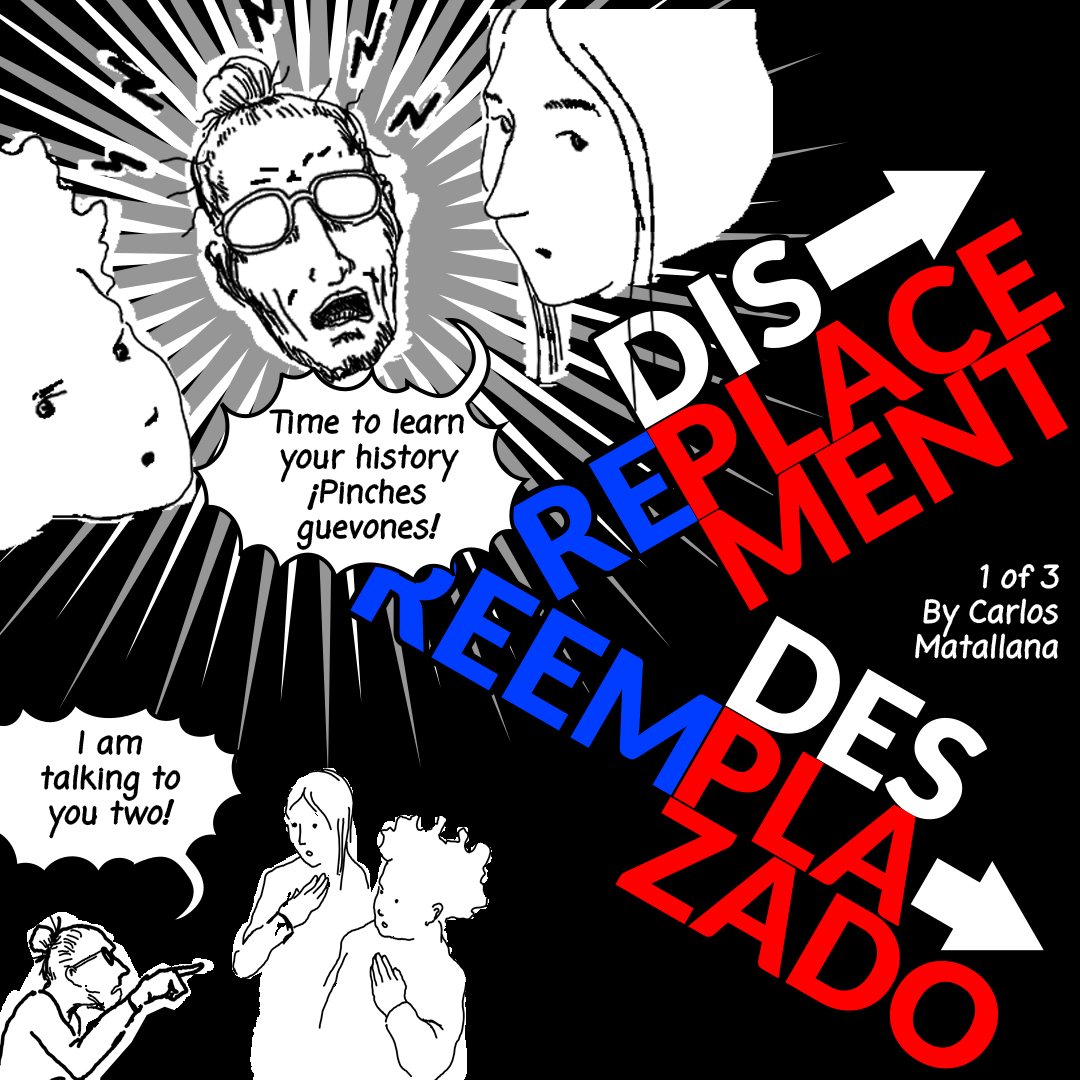
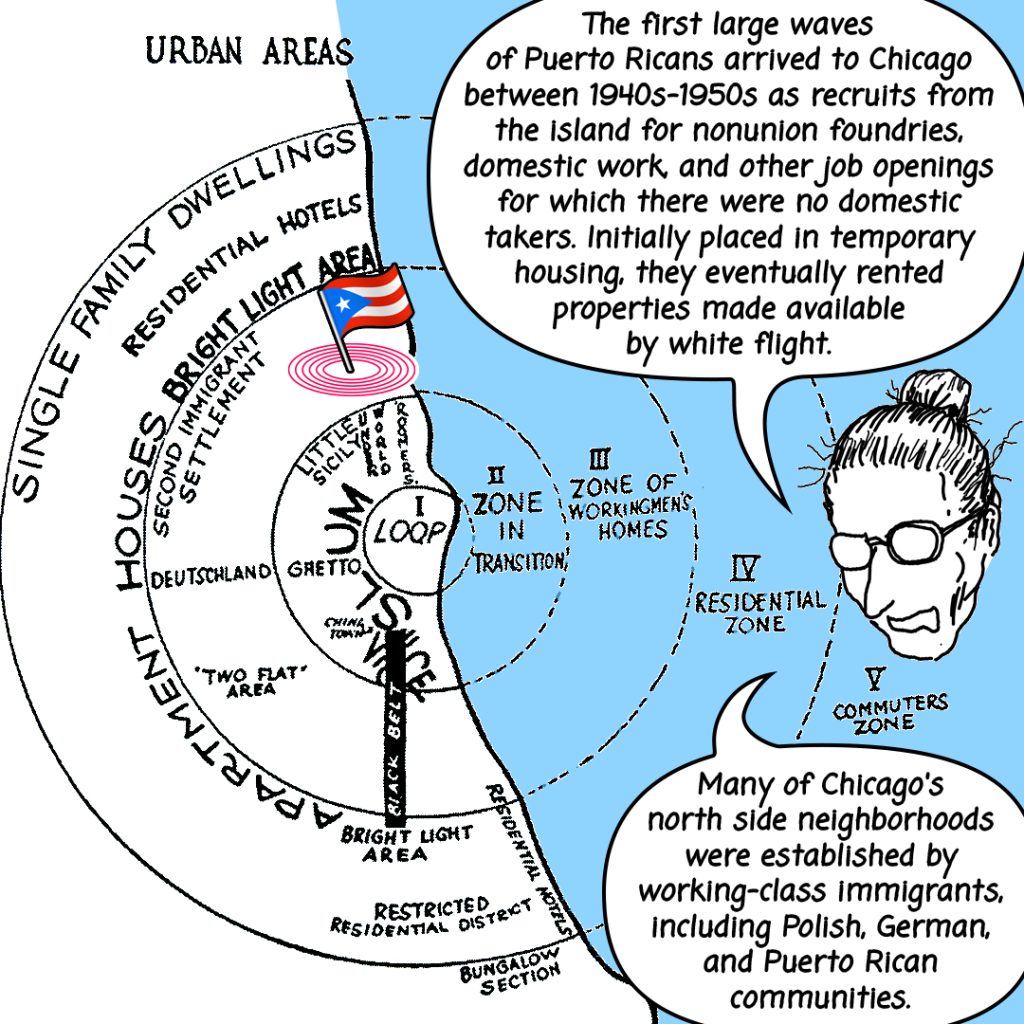
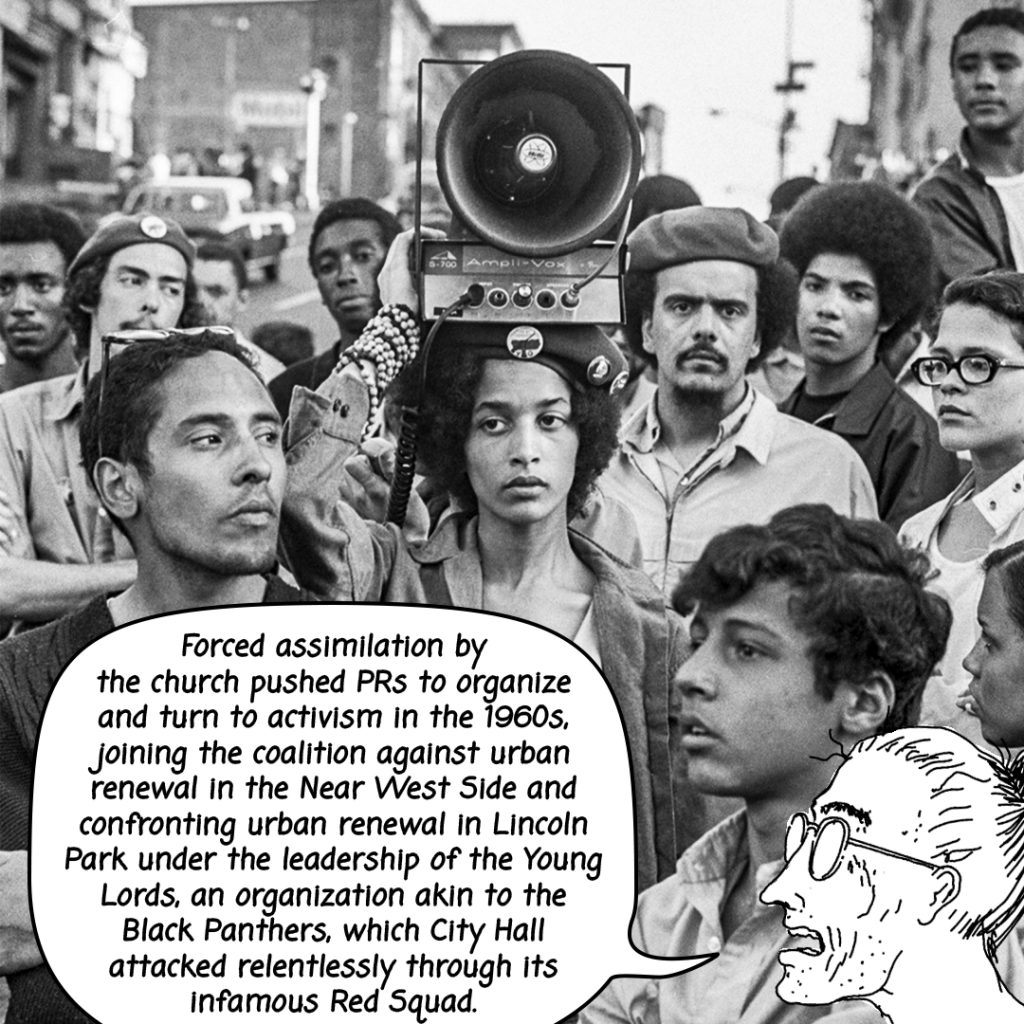
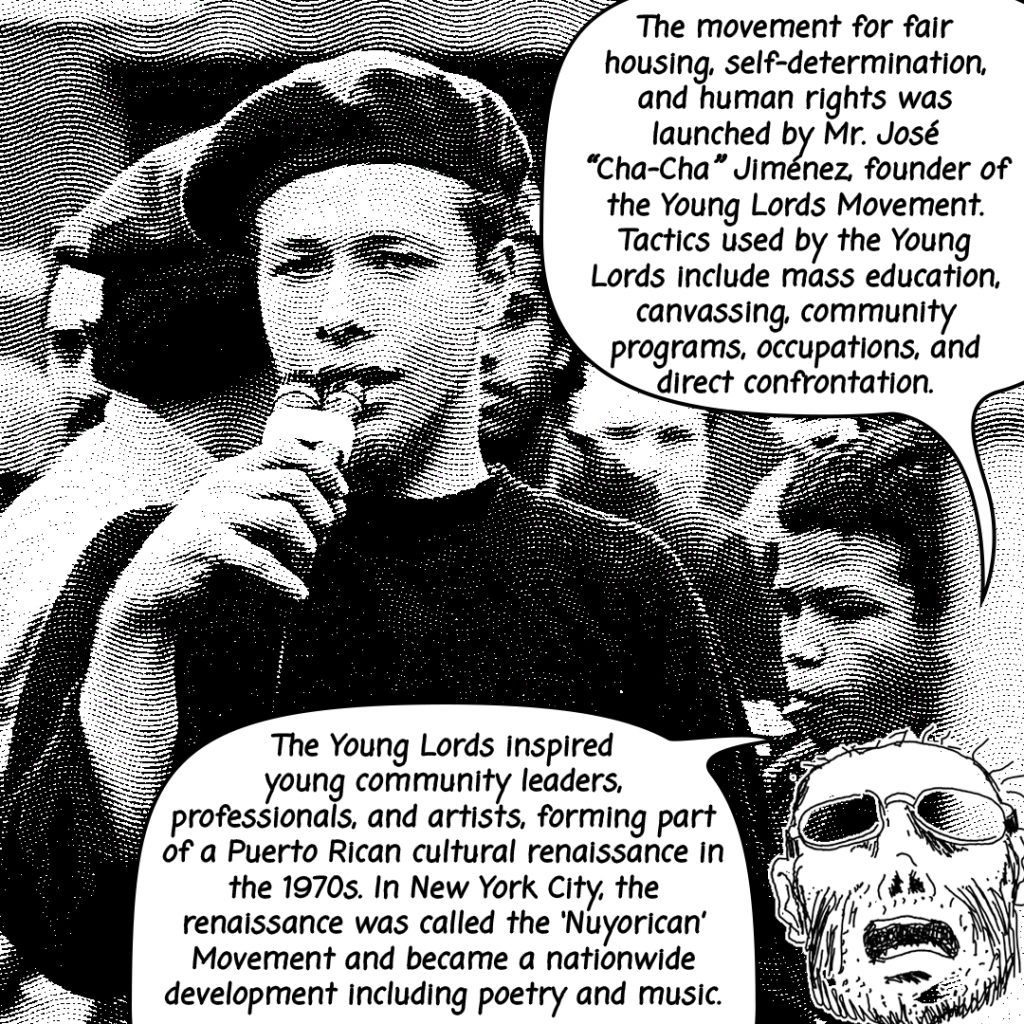
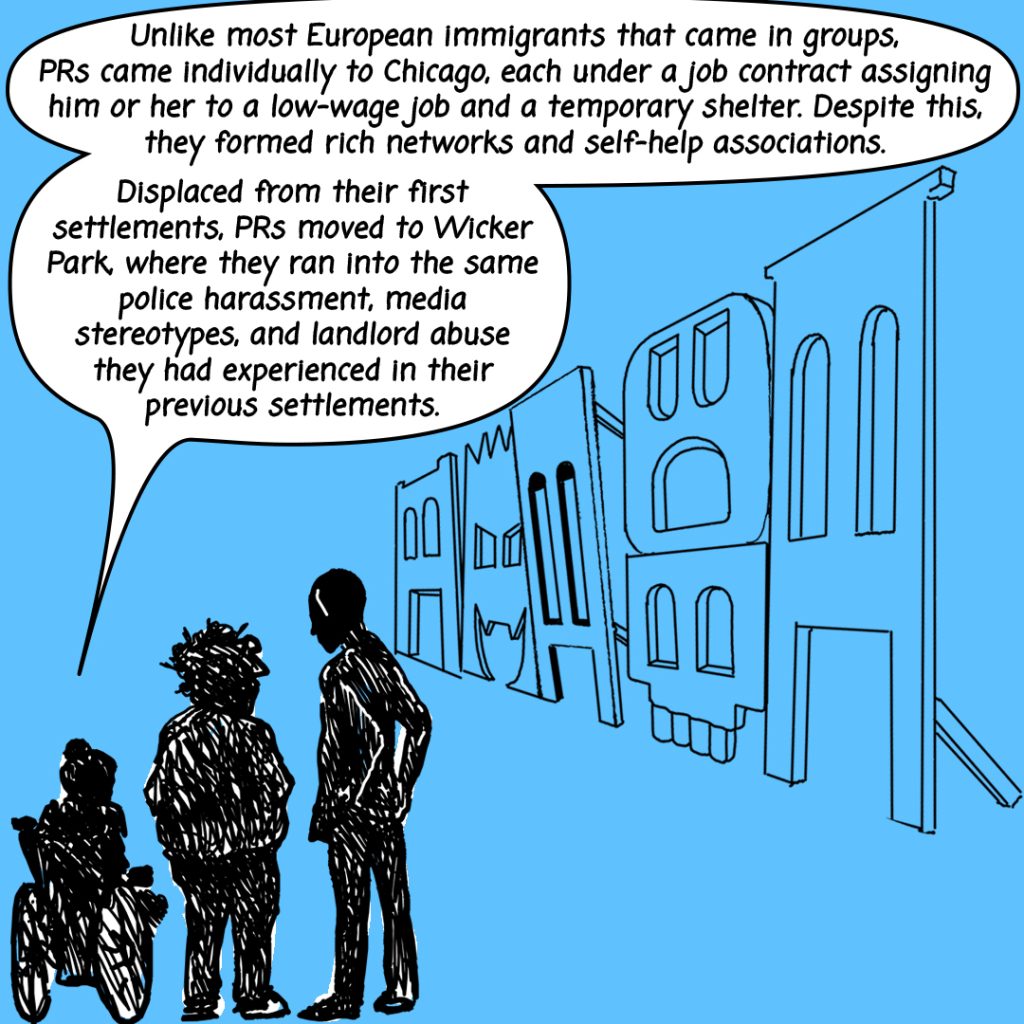

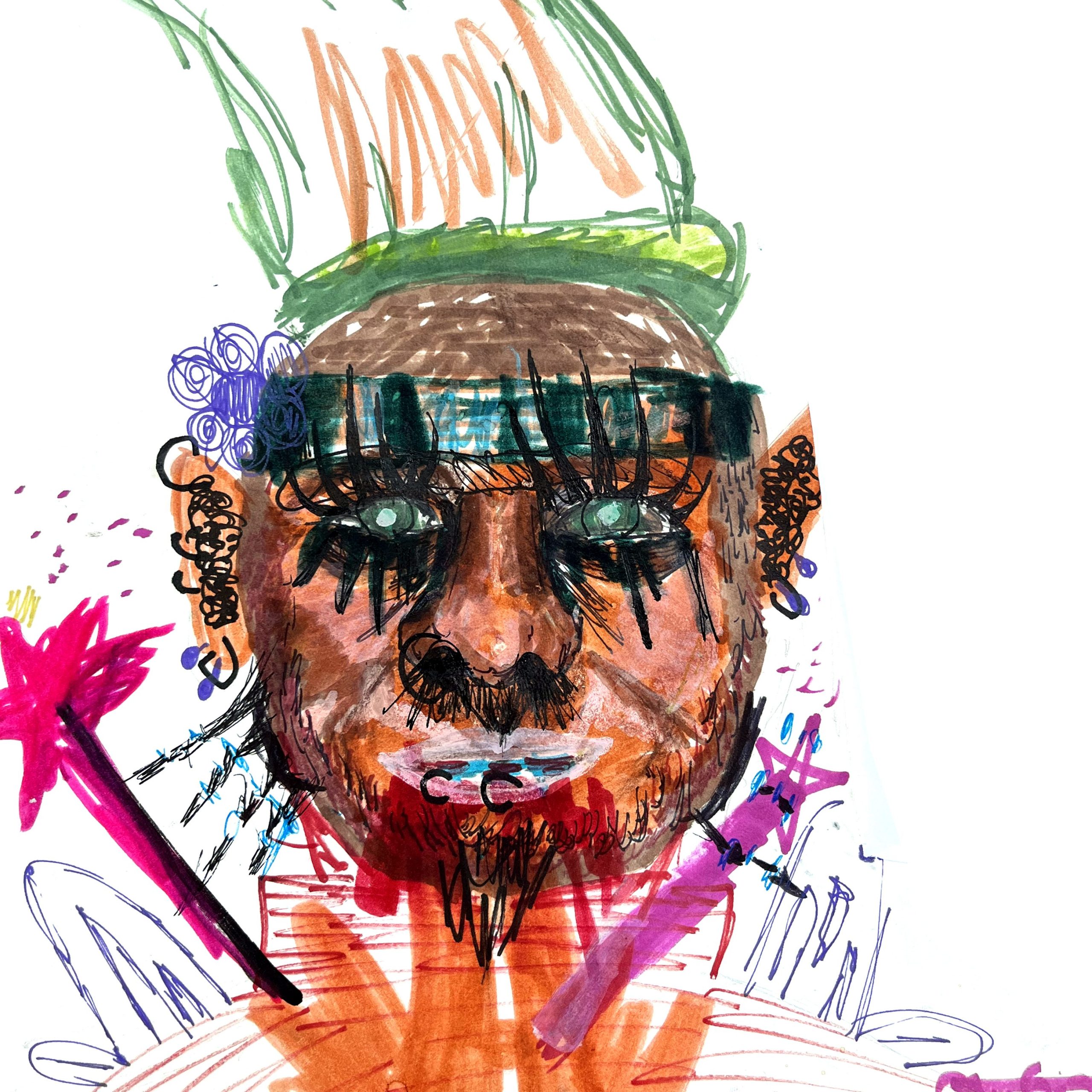
About the artist: Carlos Matallana’s (He/Him) illustration tool is ink/pen on paper, He relies on high contrast and its expressionism qualities. Like an anonymous quiet observant, he prefers to illustrate his characters from the back. He enjoys illustrating full body characters standing or in movement, revealing attitudes and feelings through posture or even clothing instead of facial expressions. He published the graphic novel Brea https://manualofviolence.org/ in 2018. Instagram @tropipunk





